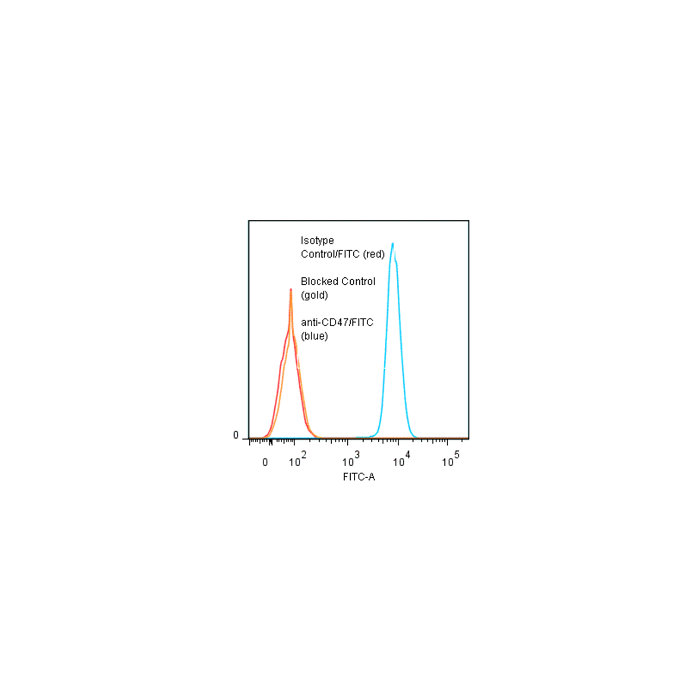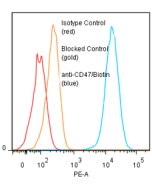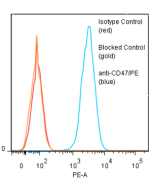Cookie Policy: This site uses cookies to improve your experience. You can find out more about our use of cookies in our Privacy Policy. By continuing to browse this site you agree to our use of cookies.
Ancell
anti-CD47 (human), mAb (ANC2F6) (FITC)

| Product Details | |
|---|---|
| Synonyms | IAP; Integrin Associated Protein; Leukocyte Surface Antigen CD47 |
| Product Type | Monoclonal Antibody |
| Properties | |
| Clone | ANC2F6 |
| Isotype | Mouse IgG1κ |
| Source/Host | Purified from concentrated hybridoma tissue culture supernatant. |
| Immunogen/Antigen | Recombinant human CD47 (extracellular Ig domain). |
| Label/Conjugates | FITC |
| Application |
ELISA Flow Cytometry (1:50) |
| Crossreactivity | Human |
| Specificity |
Binds to an epitope within the extracellular Ig-like domain of human CD47. |
| Purity | ≥95% (SDS-PAGE) |
| Purity Detail | Protein A purified. |
| Formulation | 50 mM Sodium Phosphate pH 7.5, 100 mM Potassium Chloride, 150mM NaCl, 5% Glycerol, 0.2%BSA, 0.04% sodium azide. |
| Isotype Negative Control | |
| Other Product Data |
Click here for Original Manufacturer Product Datasheet |
| Accession Number | Q08722 |
| Declaration | Manufactured by Ancell Corporation. |
| Shipping and Handling | |
| Shipping | BLUE ICE |
| Short Term Storage | +4°C |
| Long Term Storage | +4°C |
| Handling Advice |
Avoid freeze/thaw cycles. Protect from light. |
| Use/Stability | Stable for at least 1 year after receipt when stored at +4°C. |
| Documents | |
| Product Specification Sheet | |
| Datasheet |
 Download PDF Download PDF |
Human CD47 (IAP; Integrin Associated Protein) is a broadly expressed Ig superfamily glycoprotein of about 50kD with a long extracellular Ig like domain, 5 transmembrane domains and an alternatively spliced intracellular C-terminal domain. It interacts with its ligand SIRPα (CD172a; Signal Regulatory Protein) expressed mainly on myeloid cells serving as a negative immune regulator, inhibiting phagocytosis. The CD47-SIRPα axis is being investigated as possible anti-tumor immune intervention point. Blockade of this interaction has shown promise in models of HNSCC, glioma and breast cancer.









